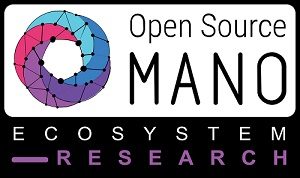Standardization of 100-Gbit/s Coherent Interfaces by ITU-T SG15
By Michael Eiselt, ADVA Optical Networking
Disaggregated optical networks require a careful specification of the interfaces between the network segments. In particular, the coherent transmission systems must be well specified to distribute the responsibility for network performance between all segments of the transmission link, namely the transmitter (TX), the optical path, and the receiver (RX). While in a proprietary system imperfections of the TX and RX can be traded-off or even compensated for such that only the overall system performance is of importance, in a system where the TX and RX are provided from different manufacturers, the interfaces must be specified in a way such that interoperation between these components is always possible.
The International Telecommunications Union (ITU), the United Nation’s standardization organization for all telecommunications related aspects, has worked for several years to create a “Recommendation” for the interfaces in 100-Gbit/s coherent transmission systems. Previously, only intensity modulated signals with direct detection at the receiver were considered in the standards of Question 6 of Study Group 15 (Q.6/15), but now, for the first time, coherent signals are specified to be included in Recommendation G.698.2 (“Amplified multichannel dense wavelength division multiplexing applications with single channel optical interfaces”). New ways to specify the quality of transmitted signals needed to be developed. These mechanisms need to be tight enough to not accept transmitted signals from the TX that would lead to a high bit error ratio at the RX, but at the same time would be wide enough to not reject transmitted signals that are acceptable to the RX.
Over a period of several years, about 15 organizations participating in Q.6/15 provided proposals and measurements on existing systems and prototypes. First, the impact of filtering was evaluated in order to define the required free bandwidth of the transmission link. The “spectral excursion” of the signal is now defined at the -2.5-dB point of the signal spectrum, and the maximum spectral excursion (which is also the minimum free bandwidth of the optical link) is ±15 GHz.
In a second step, the quality of the transmitted signal was defined, based on the error vector magnitude (EVM) at the transmitter output. The participants held discussions and made measurements to evaluate which transmitter impairments needed to be excluded from the EVM calculation and be specified separately. Only those impairments which would lead to a much higher or lower penalty on the optical signal to noise ratio (OSNR) than predicted by their impact on the EVM should be specified separately. If these impairments were included in the EVM, the transmitted signal might require a much higher or a much lower OSNR at the receiver. Both effects should be avoided for a balanced standard.
ADVA, Coriant, Ericsson, Nokia, and Telecom Italia, as partners of the Metro-Haul project, were involved in the new standard development and provided essential input to the work. Measurements (for example, of the relationship between the OSNR penalty and EVM for various impairments) were provided, as well as input on the Recommendation text for the theoretical background for optimum parameter choice.
Finally, in October 2018, the revision of Recommendation G.698.2 was agreed by the SG15 plenary and is now available at https://www.itu.int/rec/T-REC-G.698.2/en. The work done by Q.6/15 on the specification of coherent optical interfaces will be used when future Recommendations for coherent interfaces are created, and other standardization activities, like the OIF 400ZR for 400 Gbit/s interfaces, will also likely use these specification methods.




